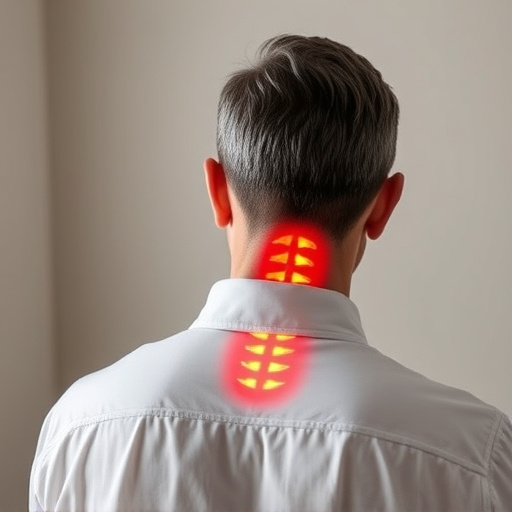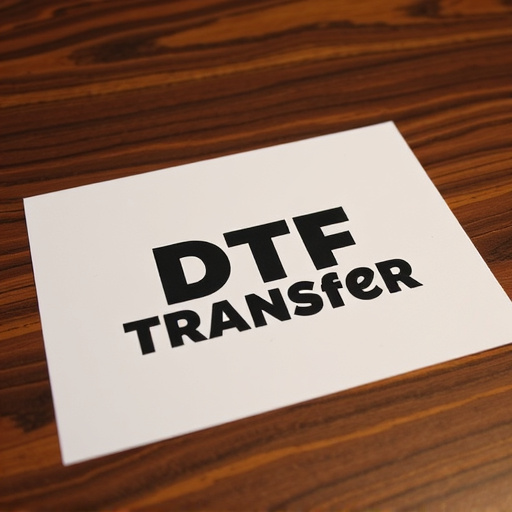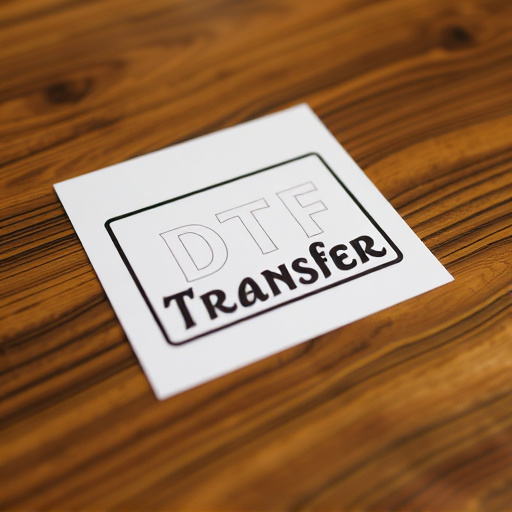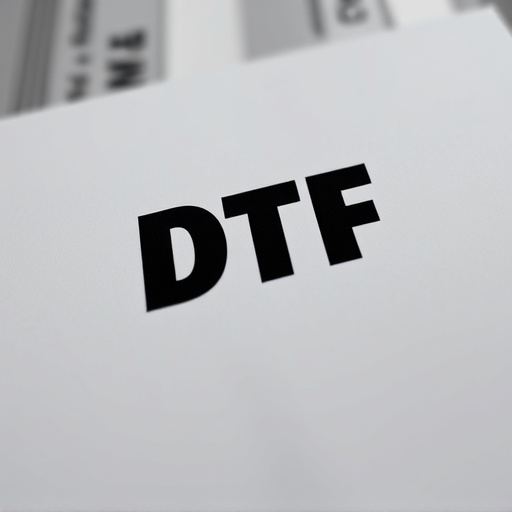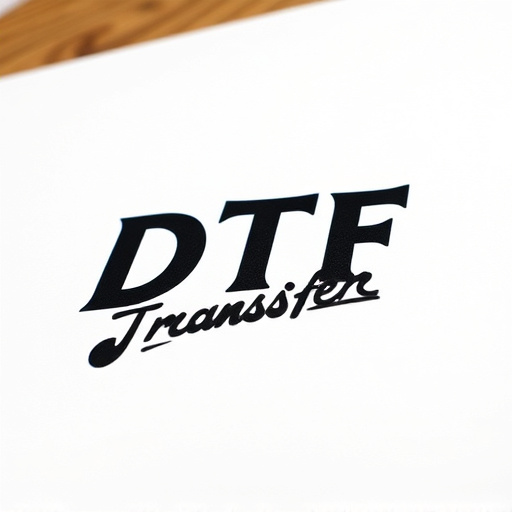Direct-To-Film (DTF) transfer printing revolutionizes design with high-quality intricate patterns. After applying ink to a flexible carrier film for protection and support during printing, the film is carefully removed once dry, leaving a crisp image. Removing the carrier film is crucial for DTF print longevity, preventing color fading or smudging. This process requires precise tools and techniques to avoid damaging delicate designs or the substrate. Professional methods include using fine-tipped tweezers, vinyl scrapers, and heat guns with safety precautions. Correct removal maintains print quality and facilitates safer storage and transport of DTF prints.
“Uncovering the secrets of successful DTF (Direct-to-Film) transfer applications involves understanding the role of carrier film and its eventual removal. This article guides you through the intricacies of post-application carrier film removal, a critical step in achieving high-quality DTF prints. We’ll explore common challenges, delve into effective techniques, and equip you with best practices for efficient removal, ensuring your DTF transfers meet professional standards.”
- Understanding DTF Transfer and Carrier Film
- Reasons for Removing Carrier Film Post-Application
- Common Challenges in Removing Carrier Film
- Effective Techniques for Efficient Removal
- Choosing the Right Tools for the Job
- Best Practices and Precautions During Removal
Understanding DTF Transfer and Carrier Film

The Direct-To-Film (DTF) transfer process is a cutting-edge technique in print and design, enabling high-quality reproduction of intricate patterns and designs directly onto various materials. In this method, a special ink is applied to a substrate, typically a flexible carrier film, which acts as an intermediate layer during the printing and transfer stages. The DTF carrier film serves as both a protective barrier and a temporary support for the print, ensuring precise alignment during application.
Understanding the role of this carrier film is crucial in the DTF transfer process. After the ink has been precisely deposited onto the substrate using specialized equipment, the carrier film protects the print from smudging or drying issues. Once the DTF prints are ready, the film is carefully removed, leaving behind the crisp, clear image on the desired material. This step requires careful manipulation to avoid damaging the print, and various techniques have been developed to ensure efficient and effective removal of the carrier film after a successful DTF transfer application.
Reasons for Removing Carrier Film Post-Application

After a DTF (Direct to Film) transfer application, removing the carrier film is crucial for revealing the final, vibrant DTF prints. The primary reason for this step is to ensure the longevity and quality of the prints. Carrier films serve their purpose in facilitating the transfer process by protecting the print during application, but they can leave behind residues that may degrade the image quality over time. By removing these films, printers can safeguard against potential issues like color fading or smudging, ensuring DTF prints maintain their brilliance and clarity.
Additionally, carrier film removal is essential for practical considerations in DTF printing workflows. It allows for easier handling of the prints, making it safer to store and transport them without the protective layer. This is especially important for businesses and individuals who deal with multiple DTF transfers, as efficient post-application cleaning streamlines their processes and enables them to deliver high-quality DTF prints consistently.
Common Challenges in Removing Carrier Film

Removing carrier film after a DTF (Direct to Film) transfer or printing can be a delicate process, often presenting several common challenges. One of the primary difficulties is achieving complete removal without damaging the underlying substrate or the transferred image itself. This is especially true for intricate designs or fine details where even the slightest mishap can result in unwanted remnants of the carrier film. Additionally, ensuring that no adhesive residue is left behind is crucial to maintaining the quality and longevity of the DTF prints.
Another challenge arises from the variety of carrier film materials used in the industry. Different films have distinct properties, including varying levels of stickiness and resistance to solvents commonly used for removal. Inconsistent results can occur when attempting to strip off a specific type of carrier film, requiring users to adapt their techniques accordingly. Moreover, the thickness and flexibility of the film can make it hard to grasp, leading to potential mistakes during the removal process.
Effective Techniques for Efficient Removal
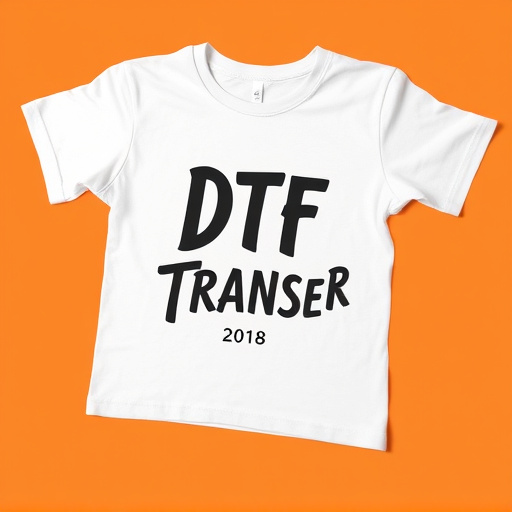
Removing carrier film after a DTF (Direct to Film) transfer application is a crucial step in ensuring optimal print quality and longevity for your DTF prints. Effective techniques for efficient removal start with allowing adequate drying time. After the transfer, give the printed surface a few minutes to set, as rush removal can lead to smudging or damage to the delicate inks and adhesives.
Using a clean, lint-free cloth or squeegee, gently press against the film’s edge to create a gap between the film and the substrate. This helps to weaken the adhesive bond. Then, starting from one corner, carefully peel away the carrier film in a controlled manner, ensuring that any residual ink or debris stays behind on the printed surface. For stubborn films, applying a small amount of isopropyl alcohol to the edge of the cloth can aid in dissolving the adhesive, making removal easier and minimizing the risk of damage.
Choosing the Right Tools for the Job

When it comes to removing carrier film after a DTF (Direct-To-Film) transfer application, the right tools can make all the difference. It’s crucial to select items that are designed for precision and efficiency, especially when dealing with intricate DTF prints. A combination of fine-tipped tweezers, vinyl scrapers, and heat guns is often a preferred choice among professionals. These tools allow for controlled manipulation without causing damage to the sensitive DTF films or the underlying substrate.
Fine-tipped tweezers are ideal for carefully lifting edges of the carrier film, while vinyl scrapers can gently and effectively remove residual adhesive. Heat guns, when used with caution, can soften the adhesive bond, making it easier to peel away the film. Remember, proper training and safety precautions should be followed when using heat tools to avoid burns or damage to the print surface.
Best Practices and Precautions During Removal

When removing a carrier film after a DTF (Direct-to-Film) transfer or printing process, it’s crucial to adhere to best practices for optimal results and to prevent damage to the applied prints. The first step is to allow the transfer to set completely, as rushing this process can lead to smudging or lifting of the print. Use a dry, clean cloth to gently blot away any excess moisture or solvent residue, being careful not to scrub, which could dislodge the ink.
Precautions should be taken to ensure a safe removal process. Avoid using harsh chemicals or solvents that could dissolve the adhesive or damage the substrate. Heat can also be detrimental, so steer clear of heat guns or sources of direct flame. Instead, apply gentle pressure while peeling back a small corner of the film to create a hinge, allowing you to lift and remove it in a controlled manner. Regular practice and patience will ensure successful DTF prints removal without compromising the integrity of your work.


